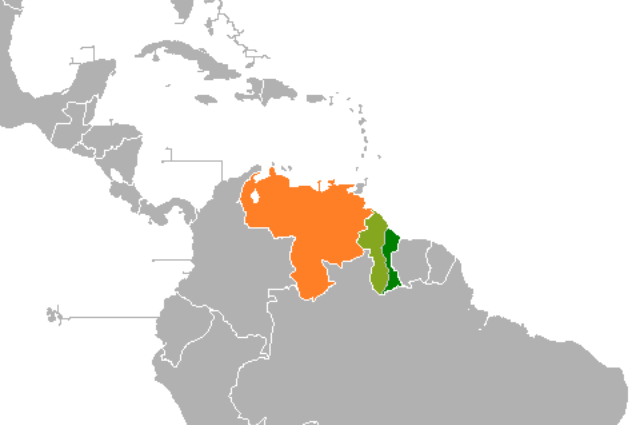Introduction
The Venezuela-Guyana clash, primarily centered around the contested Essequibo region, serves as a poignant reflection of the enduring reverberations of colonial history. From the vestiges of colonial inheritances to the legal quagmires and socio-economic ramifications, the Venezuela-Guyana conflict emerges as a microcosm of the delicate balance between nations vying for dominance and stability in a rapidly evolving global landscape.
Historical Genesis
The genesis of this geopolitical imbroglio can be traced back to the colonial echoes of Spain and Britain, where the Essequibo region emerged as a contested domain. The 1966 Geneva Agreement, conceived as a panacea for peaceful resolution, faltered as Venezuela, heir to Spain's claim, refrained from endorsing the accord. The subsequent Venezuelan gunboat crisis in 1969 thrust the conflict onto the global stage, prompting international mediation in an attempt to navigate through the intricate corridors of history.
Territorial Strife and Resource Covetousness
At the epicenter of this geopolitical tempest lies the Essequibo region, an expansive terrain encompassing 40% of Guyana's landmass and teeming with coveted resources—gold, diamonds, and oil. Venezuela's assertion of dominion over the Orinoco oil belt within this disputed territory introduces an economic dimension to the geopolitical drama. Allegations of illicit mining and resource extraction further complicate the narrative, casting a shadow over the environmental and economic landscapes of the contested expanse.
Legal Quagmires and Diplomatic Gambits
The United Nations, cognizant of the imperative for resolution, enlisted the Secretary-General in mediation efforts from the 1970s onward. In 2018, the International Court of Justice (ICJ) emerged as the sanctum of legal rectitude, affirming its jurisdiction over the case. Venezuela's initial reluctance to participate, subsequently mitigated by conditional engagement, underscores the intricate legal labyrinth characterizing this conflict. Diplomatic endeavors, marked by cautious maneuvers and reservations, mirror the delicate dance of nations threading their way through a diplomatic minefield.
Socio-Economic Reverberations
Beyond the geopolitical maneuvering, the Venezuela-Guyana conflict casts a profound shadow over the socio-economic tapestry of both nations. Strained relations impede regional cooperation, stifling economic progress and innovation. The Essequibo's ambiguous status acts as a deterrent to foreign investment, exacerbating the precarious equilibrium of development in the region. Displacement and insecurity loom large over communities on either side of the border, bearing the brunt of a conflict that transcends mere cartographic lines to permeate the very essence of human existence.
Current Dynamics and Future Imperatives
As the denouement of the Venezuela-Guyana conflict looms on the horizon, the ICJ stands poised to deliver a final pronouncement in 2024. The outcome of this ruling carries profound implications for the future of the region, its stability, and the broader principles of international law. Both nations affirm their commitment to a peaceful resolution through dialogue and diplomacy, acknowledging that the stability of the region pivots on the efficacy of these diplomatic endeavors.
Conclusion
As the sands of time inch towards the awaited pronouncement from the International Court of Justice in 2024, the resolution of the Venezuela-Guyana conflict stands poised as a pivotal moment in the narrative of international diplomacy.

